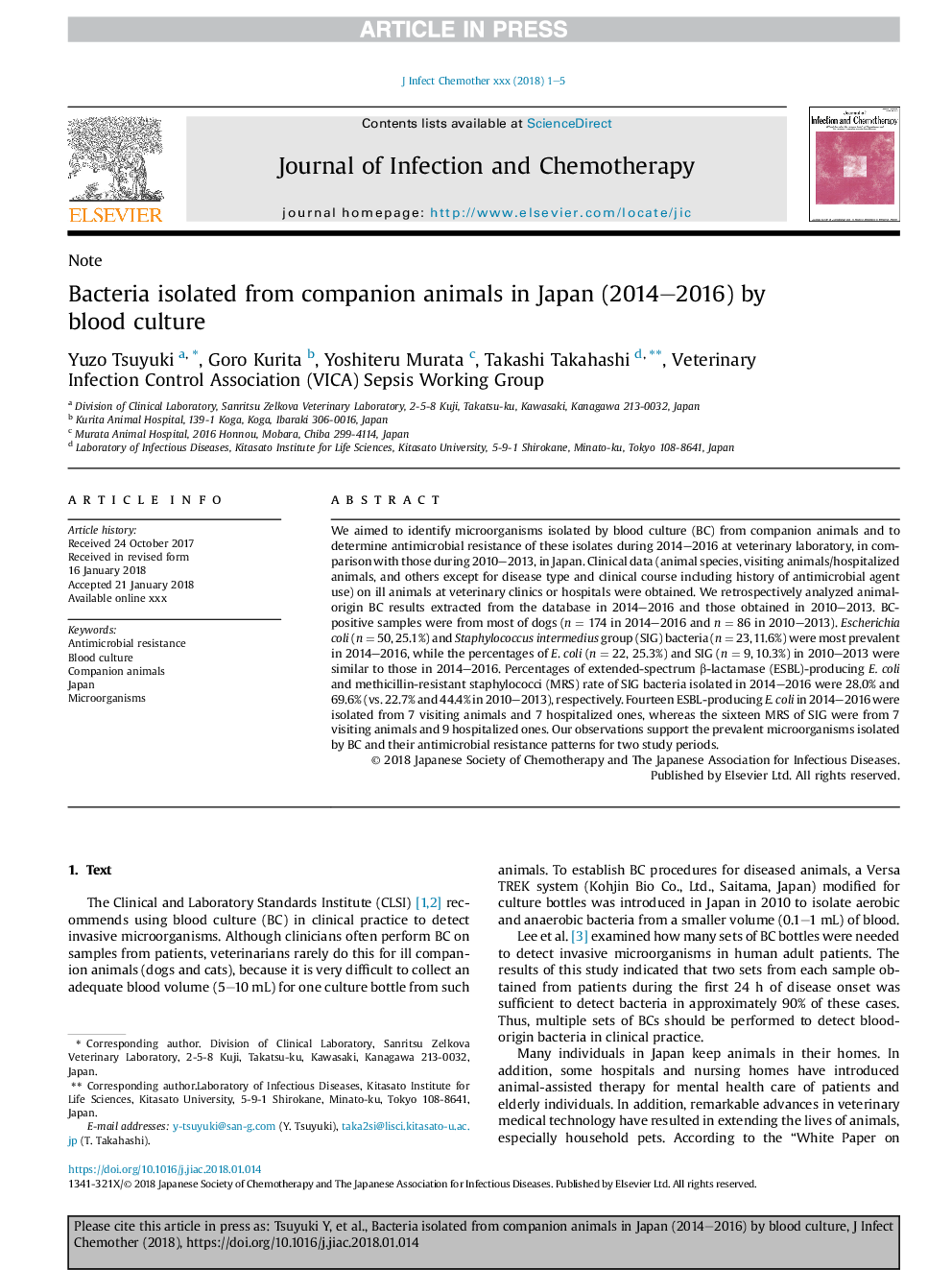| Article ID | Journal | Published Year | Pages | File Type |
|---|---|---|---|---|
| 8740616 | Journal of Infection and Chemotherapy | 2018 | 5 Pages |
Abstract
We aimed to identify microorganisms isolated by blood culture (BC) from companion animals and to determine antimicrobial resistance of these isolates during 2014-2016 at veterinary laboratory, in comparison with those during 2010-2013, in Japan. Clinical data (animal species, visiting animals/hospitalized animals, and others except for disease type and clinical course including history of antimicrobial agent use) on ill animals at veterinary clinics or hospitals were obtained. We retrospectively analyzed animal-origin BC results extracted from the database in 2014-2016 and those obtained in 2010-2013. BC-positive samples were from most of dogs (n = 174 in 2014-2016 and n = 86 in 2010-2013). Escherichia coli (n = 50, 25.1%) and Staphylococcus intermedius group (SIG) bacteria (n = 23, 11.6%) were most prevalent in 2014-2016, while the percentages of E. coli (n = 22, 25.3%) and SIG (n = 9, 10.3%) in 2010-2013 were similar to those in 2014-2016. Percentages of extended-spectrum β-lactamase (ESBL)-producing E. coli and methicillin-resistant staphylococci (MRS) rate of SIG bacteria isolated in 2014-2016 were 28.0% and 69.6% (vs. 22.7% and 44.4% in 2010-2013), respectively. Fourteen ESBL-producing E. coli in 2014-2016 were isolated from 7 visiting animals and 7 hospitalized ones, whereas the sixteen MRS of SIG were from 7 visiting animals and 9 hospitalized ones. Our observations support the prevalent microorganisms isolated by BC and their antimicrobial resistance patterns for two study periods.
Related Topics
Life Sciences
Immunology and Microbiology
Applied Microbiology and Biotechnology
Authors
Yuzo Tsuyuki, Goro Kurita, Yoshiteru Murata, Takashi Takahashi, Veterinary Infection Control Association (VICA) Sepsis Working Group Veterinary Infection Control Association (VICA) Sepsis Working Group,
